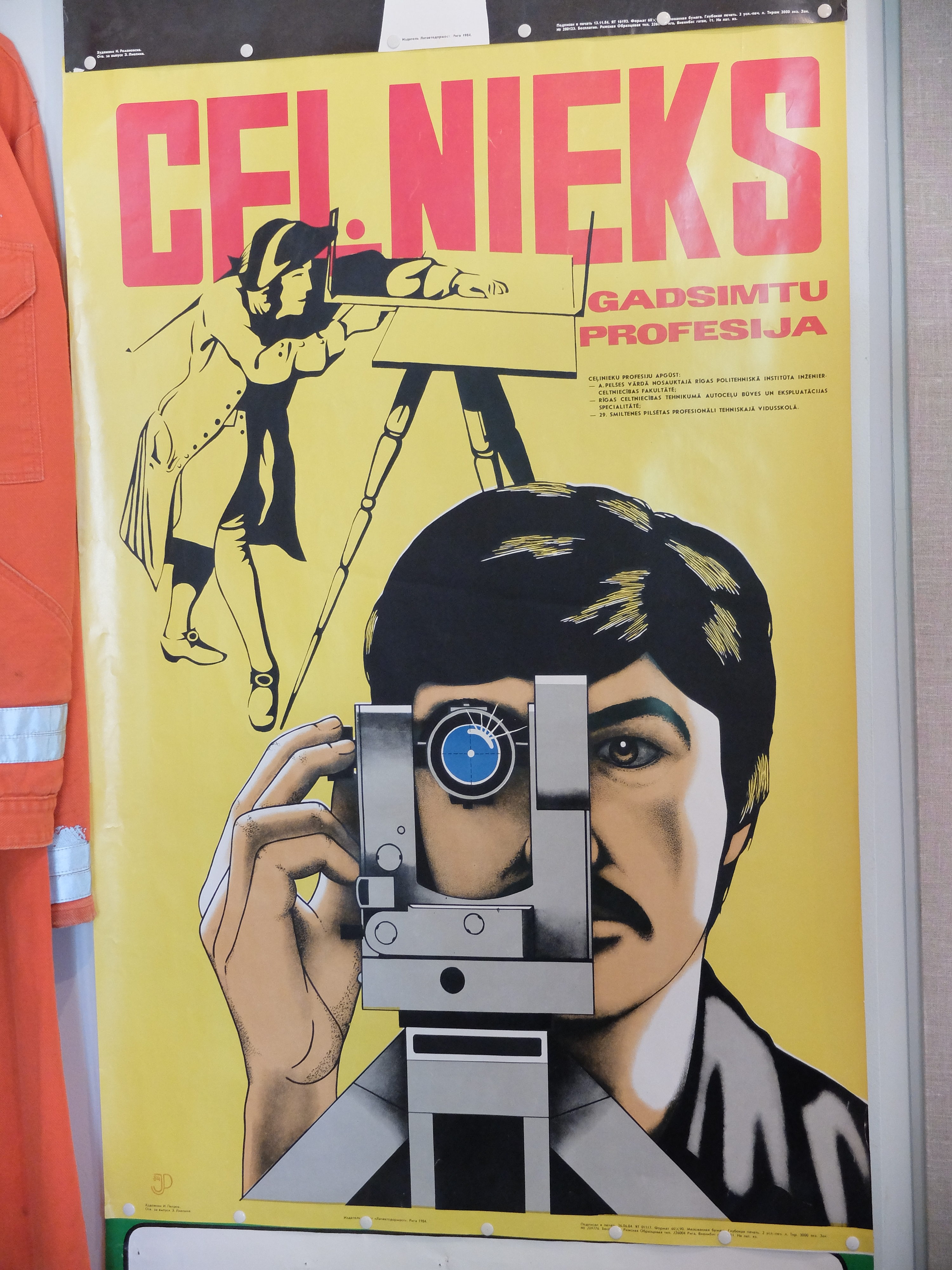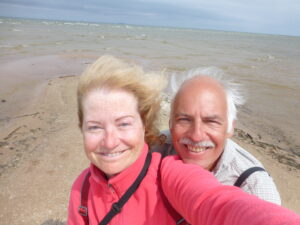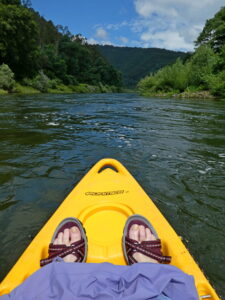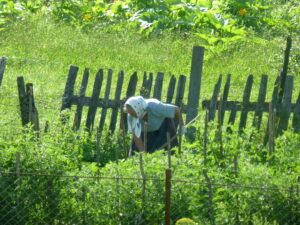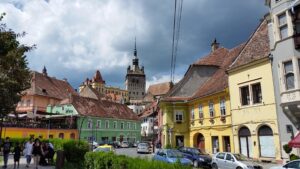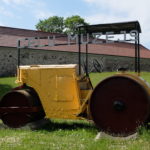
In the midst of a long day trip west of Riga, we chanced on an unusual museum, a testament to someone’s obsession for a subject – in this case, the enchantment of road building.
Our plan was to drive to three spots of interest in Latvia, Cape Kolka plus the towns of Ventspils and Kuldiga – not see any museums.
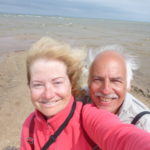
So we rounded the blustery Cape where the Baltic Sea turbulently confronts the huge Bay of Riga. On the adjacent coasts, the building of ships rather than roads had been a major industry into the 20th century. The endless forests of re-planted pine trees on the Kolka peninsula testify to that.
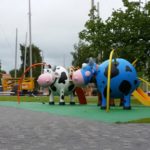
Then we swung south through the old town of Ventspils, home of a manorial castle which is now a more typical historical museum. In the town, international ferries dock and shipping operations line the river banks. Coal is piled alongside, destined for the hundreds of rail cars lined up along the main route into town. We seem to have bypassed the charming part of this town, the part our guidebook had vaguely defined – except for a whimsical display of colorful cows within the parks. Yet we did enjoy a pleasant lunch at the large, wood-plank building named Kupfermans, a hotel restaurant and spa near the center.

The last stop on the drive, despite a chilly downpour, was Kuldiga where we found the lanes and old buildings that make Kuldiga so appealing to filmers of period pieces. Once a major town, the former seat of the wealthy Duchy of Courland, it has made the most of its heritage despite past destruction, with hectares of parkland and an inviting village center.

We drove along its river, stopping to see the town’s fine brick bridge and the picturesque cascade upriver. That led us to the grounds of its old manor, now a charming ravine park with criss-crossing wood bridges angling away from another picturesque set of buildings around an open green.
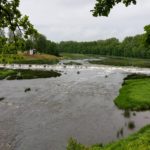
These were well-known destinations. Some attractions are less obvious. To direct tourists to the less obvious ones, the Baltic countries have put considerable resources into signage along the roads. These brown metal signposts, marked with what seems to be an abstract castle symbol – a rectangle whose four corners are loops – , point the way to historically significant places.
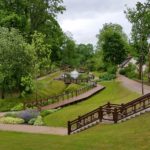
Every so often we have stopped for these, finding, for example, the only working water-run mill in Latvia or manor houses newly opened by entrepreneurs to visitors or old castles. At Milzkalne, one such sign a short distance from Tukums – far from the tourist destinations – invited us to the low-lying buildings of the lesser Slokenbeka Manor. That’s where we found the museum about roads.
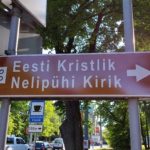
Whoever put the Latvian Road Museum here loved roads: how they’ve been made over time, how we ride on them, how they are marked or signed and what goes on behind the scenes. Later we saw a tourist overview that claimed, “In terms of scope, the museum’s collection makes it the richest road museum in not just Europe, but in the entire world.” We could believe that hype.
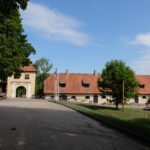
A set of two story buildings were set around a large open courtyard. We entered the courtyard on foot through a gate marked 1732. On display in the large yard were examples of different technologies in road building, from graded dirt to wood log, stone, gravel, bitumen and concrete.
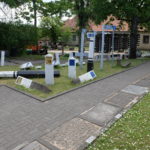
You could even see the Roman method which was surprisingly complex, with paving stones lain atop soil, under which lay several layers of varying sizes of crushed stone. Nearby stood dozens of signage examples: low stone markers, looming totem poles, wooden directional signs, and the metal signs we are familiar with today.
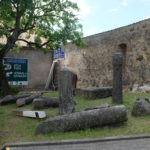
In one building, an old stable, we saw the different types of equipment used to make these roads, from scrapers to rollers to spreaders – including the buses used to transport crews. And then there were the vehicles: old buggies and farm carts and early motorized vehicles that jounced along dirt roads; as well as Soviet era cars that jounced along asphalt roads.
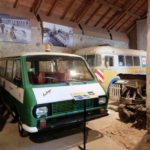
Upstairs in another building, a side room told the story of the manor’s owners and its reconstruction, but the other half-dozen rooms were preoccupied with the less obvious aspects of road building. Here we could learn – had we the zeal – about how designers, surveyors, bridge-builders and engineers did their jobs.
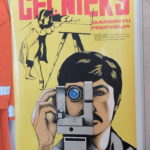
Not only were these honored with extensive displays, but so were the accounting departments. Here we found historical examples of how they handled money (currencies, safes, etc.) and a history of counting technologies from abacus to 80s style PC.
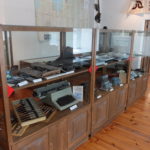
A final room displayed photos and old postcards celebrating the bridges across Lithuania and the rest of Europe, including several we had already tested in our driving. In the corner, children had the opportunity to draw what they had seen or, better yet, assemble a set of slats into a miniature truss bridge.
By the time we left, appropriately driving our car along local roads, we had spent over an hour at this oddity of a museum. We had been nearly alone except for one other couple and a surprising number of staff. How sad, we reflected, that so few come here to revel in those roadways we often take for granted – until we’re stuck in traffic due to some roadwork.
Happily, in the parking lot, a large double-decker bus had just dropped off a noisy swarm of middle school children, here on a weekday to learn something new about roads.
(Also, for more pictures from Estonia and the Baltics, CLICK HERE to view the slideshow at the end of the Baltics itinerary page.)


